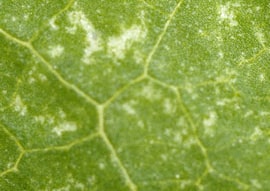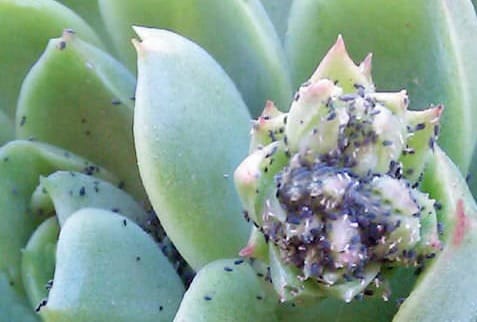Are you tired of the silky white webs and the Spider mites on succulents? Yes, we are talking about these nasty pests quite popular among all plant lovers. More than hundreds of plant species are a part of their victim list including the famous resilient succulents and cacti.
Almost a millimeter in size, they have the power to infest and destroy your plant. And, all this is just a matter of few days! They pierce the leaf surface and live upon the juices sucked from the plant. This results in tiny discolored spots appearing on the leaves preferring the new growths. Want to know more about spider mites and popular strategies to tackle them? You are in the right place; so, keep reading!
What are Spider Mites?
Spider mites, as you know are not spiders, but pests. In spite, it is the multi-legged body structure and web making around the foliage giving them the specific name. However, these webs are quite plain and not as well-designed as compared to the ones made by typical spiders.
Our naked eye can not identify them except tiny white or colored specks of dust. They usually live under the leaves and around the joints of the stalk. Moreover, baby leaves are the favorite and the initial targets. So, if you want to check your plant at an early stage of the attack, you know where to look for.
Types of Spider Mites
These members of the class Arachnids are not more than the tip of your ballpoint pen. They exist in many different forms including black, purple, green, and even translucent. Colors and minor differences in the structure are what make them different from each other.
The two common types of that attack the succulents and cacti are;
- White Spider Mite (Tetranychus cinnabarinus)
- Red or Spotted Spider Mites (Tetranychus urticae)
How do Spider Mites Spread?

You will be surprised to know that just three days are enough to double the number. Thus, the whole plant collection becomes a victim. Scary, isn’t it?
- The 5 days old female starts reproducing. It lays about hundreds of eggs within its lifespan which don’t take more than 72 hours to hatch. As a result, the “army” gets larger and stronger quickly.
- If left unchecked, the insects will not take more than a few weeks to cover the whole plant in the form of an uncontrollable infestation.
- The mature bugs create silk webs. These webs not only protect them before predators but also help carry them to new victims nearby.
- The wind is another carrier that helps to carry them to other plants.
How do Spider Mites Destroy Plants?
These mites attack the plant and keep piercing the leaves to get absorb the plant sap. This makes the leaf get spotted with yellow to brown spots. Afterward, the infestation gets deeper and the leaves start to fall off eventually killing the plant. And, the scary thing is that all this happens in just a few days.
The pesky bugs thrive in hot and humid conditions. They even hide in soil and return in suitable weather and conditions.
Where do Spider Mites Come From?
- The tiny pests usually enter your garden through the new plants you brought from the nursery. So, make sure you check the new plant thoroughly before placing it in your plant collection.
- Wind may be the culprit to bring some bugs from the infestations in neighboring gardens.
How to Check and Identify Spider Mites on Succulents?
- Succulent mites like to reside under the leaves, especially at the internodes. They prefer to start by destroying baby leaves. Turn the leaves and you may see tiny white or reddish specs moving when poked.
- You can also use a white paper towel and wipe the leaf surface or the underleaf. Red streaks smeared against the tissue or paper towel will confirm the red mites.
Signs of Spider Mites on Succulents?

As already mentioned, these pesky bugs multiply rapidly. Within no time, the whole plant gets covered with webs and bugs looking more like dust particles.
There are bright chances that you might notice the infestation when the game has already become difficult. So, it is always better to check your plants every week. This will help you to identify the bugs in their initial stage before they spread and become stubborn.
The initial sign of the attack is the change in color of the plant. Your healthy bright plant suddenly starts looking dull with white or brownish specs. This is especially where the plant was previously green and fresh.
- The mature bugs start making silky white webs on maturity. So, if you are seeing these white webs on the foliage, it indicates an ongoing infestation.
- By this time, the patches of succulent mites damage would be visible on the plant. These are yellow or brown, starting from the new leaves.
- As the infestation gets stronger, the growth of the plant also slows down.
Spider Mites on Cactus
- In the case of cacti, these mites are usually identified when the silky white webs start appearing across the plant. New growths are the initial targets in these species as well.
- In some species (lophophora or peyotes), the cactus mites give the effect of minor sunburns near the plant’s base.
- These Cactus Mites flourish further to slow down the plant’s growth. However, this sign is not helpful to identify the initial attack in the naturally slow-growing cacti.
How to Treat Spider Mites on Succulents?
Coming towards the solution, we are going to discuss a few popular ways to get rid of these mites. These methods are useful for almost all the succulents and plants including the spider mites on cactus plants:
Quarantine of the plant:
Isolation of the infected plant is the first step in the course of treatment. Just when you get a doubt about the spider mites on your plant, don’t even wait to be sure. Put your plant away from other plants to make sure the mites can’t spread even through the wind.
If the infestation is in advanced stages and the plant is a common one, you can even consider throwing it. By throwing away we mean to dispose of it in some suitable place where the mites can not reach other plants. This will not only save your time and energy but also the other plants in your collection.
Pruning:
After quarantine, cutting and disposing of the infected leaves is the easiest way to get rid of the mites. Just make sure you dispose of them enough to avoid the spread.
Water Flushing:
The next step after quarantine and snipping off the infected leaves is to flush the foliage with water. You need to use a hosepipe with high water pressure. Now, wash the whole plant including the lower sides of the leaves. This will flush away the majority of the mites along with their eggs and larvae.
Make sure the water is drained away from the garden. You can wash the plant a few times to maximize the clean-up. Moreover, you still need to keep the plant in quarantine for about three to four months until there are no further signs of the infestation.
Neem Oil:
This is one of the most popular organic pesticides widely used to combat a variety of pests. The strong aroma and flavor of the herb repel and kills the mites. This method can be used for many plants including succulents and cacti. Just make sure you don’t use it concentrated and dilute it with a soap solution before using it. Want to know “How to make a neem oil spray”? We are moving ahead with the recipe.
Just mix one tablespoon of liquid dish wash soap with half a teaspoon of neem oil. Mix it well and add it to one litre of water. Pour the solution into a spray bottle and use it thoroughly on the infected plant. Daily doses in the whole one week will remove almost all the mites from the plant.
Synthetic Insecticides:
You can consult the pesticide experts in your local market and get a suitable one for your plant. Always follow the instructions on the pack and use a milder dose. Additionally, never forget to use precautionary measures to avoid harmful effects for yourself. Also, make sure the treated plant is not in the reach of kids and pets.
Soap Solution:
Simply using dish wash soap mixed in water is also helpful. Just add a tablespoon of dish wash liquid in one litre of water and spray the plant thoroughly. However, this method is not as effective as neem oil.
Mouthwash Spray:
This one starts showing results from the first use. Mix 2 tablespoons of mouthwash and one tablespoon of liquid dish wash soap in 1 liter of water.
Just like other spray solutions mentioned in this article, this one too needs to be sprayed repeatedly. You can spray every day at least for the initial week to get completely rid of the mites.
Alcohol Spray:
This is another effective yet plant-friendly method to combat the Spider mites on succulents and cacti. Mix water and alcohol in equal proportions and thoroughly spray the plant. You can also add a few drops of liquid dish wash soap to increase efficiency. Just make sure you are following the proper ratio and don’t add more than 1 teaspoon for one litre of the spray solution.
Lemon-water Spray:
This is another harmless method to combat spider mites, especially in the early stages. Half a lemon squeezed in a litre of water sprayed on every inch of the plant is known to show good results.
High humidity:
Spider mites are known to thrive in dry conditions. So, increasing the humidity or regular misting also suffocates the bugs. Howbeit, this method can attract other issues like fungus, rotting, and other pest attacks.
Natural Predators:
Expert gardeners also use the popular plant-friendly predating insects on the plants. These include ladybugs, lacewings, pirate bugs, and thrips. However, this method is not for indoor plants. Moreover, it is only for experts and common people who are not experienced enough to use this remedy. So, using this remedy is not recommended.
How to Avoid Spider Mites on Succulents and Other Plants

They say, “prevention is better than cure”, which is quite perfect in this case. A few precautionary measures are mentioned below to avoid the mites in the first place:
- Make sure you thoroughly wash a newly procured plant with a high-pressure water hose. Also, after washing you can use a natural anti-pest solution like the soap water solution mentioned above. This will clean up any possible pests on the plant.
- After washing, quarantine the new peep for a few weeks until you are sure about the absence of mites.
- Using biopesticides regularly in the garden is also a recommended way to keep all kinds of pests at a bay.
Summary
Spider mites are common pests in the plant world. They do not even spare the succulents and cacti, popularly known for their resilience. These fast-breeding and spreading bugs can kill the plant in a matter of few weeks only. Hence, it is best to keep a regular check on the plants. Also, following the precautionary measures is another wise way to avoid them in the first place.
Spider mites on succulents and cacti can be identified by signs like the yellowing of plants. Moreover, silk webs across the foliage along with discolored patches are other prominent signs.
You can combat these nasty bugs by quarantining the plant, pruning, and flushing it with water. Other measures include using neem oil, soap solutions, and synthetic pesticides.

